Displace Filter & Displacement Maps Tutorial
Making A Realistic Flag

Liquid pixels - wrapping pixels over undulating silk
The layer blend modes are an effective way of merging or blending a pattern or graphic with a three-dimensional form. By using the blend modes the flag in this project can be modified to respect the color and tonality of the undulating silk beneath it.
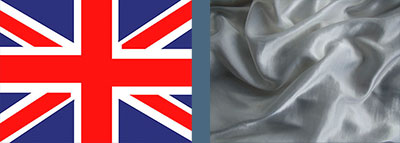
The highlights and shadows that give the silk its shape can however be further utilized to wrap or bend the flag so that it obeys the material’s shape and sense of volume. This can be achieved by using the Displace filter in conjunction with a ‘displacement map’. The ‘map’ defines the contours to which the flag must conform. The final effect can be likened to ‘shrink-wrapping’ the flag to the 3-D form of the undulating silk.
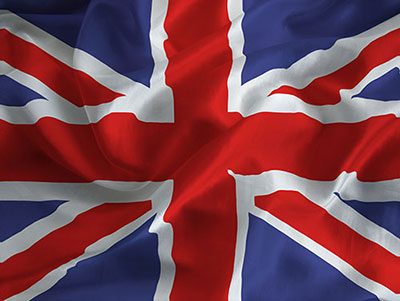
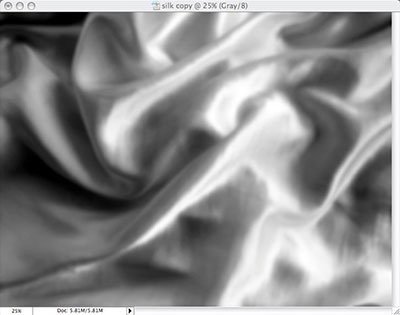
How it works: The brightness level of each pixel in the map directs the filter to shift the corresponding pixel of the selected layer in a horizontal or vertical plane. The principle on which this technique works is that of ‘mountains and valleys’. Dark pixels in the map shift the graphic pixels down into the shaded valleys of the 3-D form whilst the light pixels of the map raise the graphic pixels onto the illuminated peaks of the 3-D form.
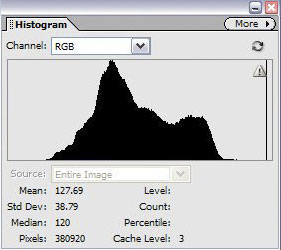
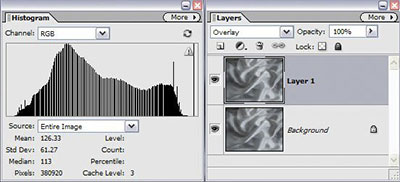
STEP 1
A silk dressing gown was photographed using the available light. For this image to act as an effective displacement map the contrast must however be expanded. An effective way of expanding contrast in Photoshop Elements is to duplicate the layer and set the top layer to ‘Overlay’ blend mode. Note the changes to the histogram by viewing the histogram in the Histogram palette.
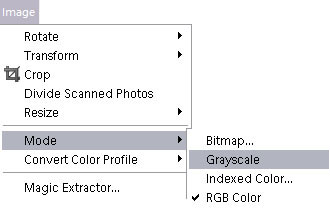

STEP 2
Go to the Image menu and from the Mode submenu select ‘Grayscale’. Choose the option ‘Flatten’ when the Warning dialog box appears.
Note > The displacement map must be in Grayscale otherwise the color channels will upset the appropriate displacement effect.
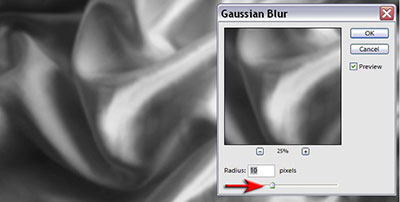
STEP 3
To further improve the effectiveness of the displacement map we must blur the image slightly. This effect of blurring the map will smooth out the lines of the flag as it wraps around the contours of the silk. Too much blur and the undulations will be lost, too little and the lines of the flag will appear jagged as it is upset by any minor differences in tone. Go to ‘Filter > Blur > Gaussian Blur’ and start by selecting a Radius of around 10 pixels. Increase or decrease this radius when working with images of a different resolution.
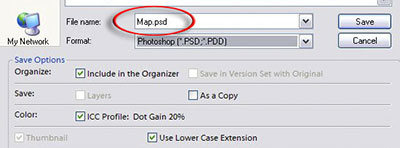
STEP 4
Save the image (displacement map) as a Photoshop (PSD) file. Close the blurred Grayscale file as the map is now complete. You will need to choose this file when the Displacement filter asks for the location of your map, so make a note of where it has been saved to on your computer.
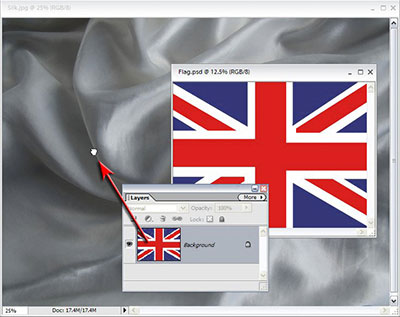
STEP 5
Open or select the RGB silk file that has not been blurred. Also open the flag image. With the flag image as the active window, choose ‘All’ from the Select menu and then choose ‘Copy’ from the File menu. Now make the silk image the active window and choose ‘Paste’ from the File menu. Alternatively you can just drag the thumbnail of the flag image in the Layers palette into the image window of the silk image if you can see both image windows on your desktop.
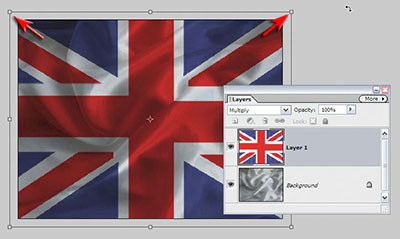
Set the blend mode of the flag layer to ‘Multiply’. If you are intending to displace a graphic or a texture it is worth ensuring that you have some elbow room (when we displace the flag it will come away from, and reveal, the edges of the background layer if they are the same size). Use the Free Transform command to enlarge the flag layer so that it is a little larger than the background layer.
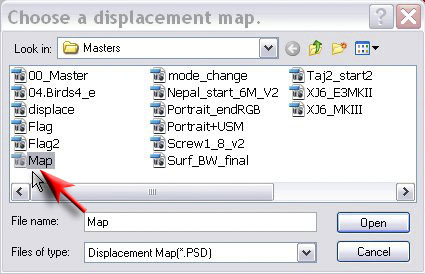
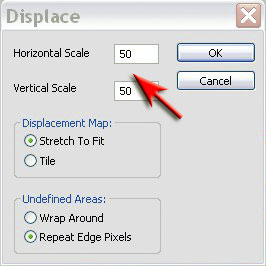
STEP 6
Go to ‘Filter > Distort > Displace’. Enter in the amount of displacement in the Horizontal and Vertical fields of the Displace dialog box. The size of the displacement is dependent on the resolution of the image you are working on. Choose amounts of 40 for both fields for the Flag.jpg used in this project. Increasing the amount greater than 60 for either the Horizontal or Vertical scale will increase the amount of distortion in this project image, but will also start to break off islands of color from the design of the flag indicating that the limit of the effect has been exceeded. Choose the displacement map you created earlier to complete this step. Your flag should now miraculously conform to the contours of the silk. If you are not entirely happy with the results go to the Edit menu and choose ’Undo’. Repeat the process choosing smaller or greater amounts in the Displace dialog box.
Note > It helps if the graphic or pattern image file you are displacing is slightly larger than the image file you created the map for. This will ensure that no gaps appear between the distorted graphic and the edge of the image window.
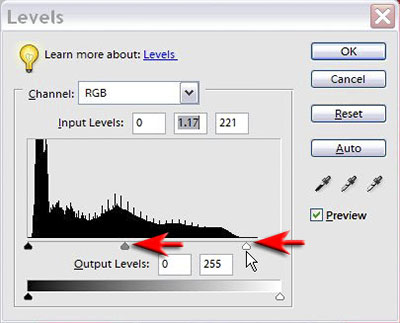
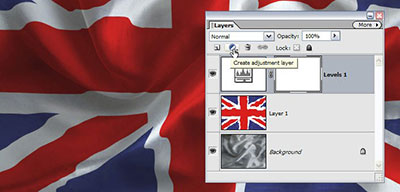

STEP 7
Add an adjustment layer and drag the Highlight slider to the start of the histogram to extend the dynamic range and make the highlights and midtones appear brighter. Your dramatic and colorful background is now complete.

Liquid pixels - wrapping pixels over undulating silk
The layer blend modes are an effective way of merging or blending a pattern or graphic with a three-dimensional form. By using the blend modes the flag in this project can be modified to respect the color and tonality of the undulating silk beneath it.

The highlights and shadows that give the silk its shape can however be further utilized to wrap or bend the flag so that it obeys the material’s shape and sense of volume. This can be achieved by using the Displace filter in conjunction with a ‘displacement map’. The ‘map’ defines the contours to which the flag must conform. The final effect can be likened to ‘shrink-wrapping’ the flag to the 3-D form of the undulating silk.


How it works: The brightness level of each pixel in the map directs the filter to shift the corresponding pixel of the selected layer in a horizontal or vertical plane. The principle on which this technique works is that of ‘mountains and valleys’. Dark pixels in the map shift the graphic pixels down into the shaded valleys of the 3-D form whilst the light pixels of the map raise the graphic pixels onto the illuminated peaks of the 3-D form.


STEP 1
A silk dressing gown was photographed using the available light. For this image to act as an effective displacement map the contrast must however be expanded. An effective way of expanding contrast in Photoshop Elements is to duplicate the layer and set the top layer to ‘Overlay’ blend mode. Note the changes to the histogram by viewing the histogram in the Histogram palette.


STEP 2
Go to the Image menu and from the Mode submenu select ‘Grayscale’. Choose the option ‘Flatten’ when the Warning dialog box appears.
Note > The displacement map must be in Grayscale otherwise the color channels will upset the appropriate displacement effect.

STEP 3
To further improve the effectiveness of the displacement map we must blur the image slightly. This effect of blurring the map will smooth out the lines of the flag as it wraps around the contours of the silk. Too much blur and the undulations will be lost, too little and the lines of the flag will appear jagged as it is upset by any minor differences in tone. Go to ‘Filter > Blur > Gaussian Blur’ and start by selecting a Radius of around 10 pixels. Increase or decrease this radius when working with images of a different resolution.

STEP 4
Save the image (displacement map) as a Photoshop (PSD) file. Close the blurred Grayscale file as the map is now complete. You will need to choose this file when the Displacement filter asks for the location of your map, so make a note of where it has been saved to on your computer.

STEP 5
Open or select the RGB silk file that has not been blurred. Also open the flag image. With the flag image as the active window, choose ‘All’ from the Select menu and then choose ‘Copy’ from the File menu. Now make the silk image the active window and choose ‘Paste’ from the File menu. Alternatively you can just drag the thumbnail of the flag image in the Layers palette into the image window of the silk image if you can see both image windows on your desktop.

Set the blend mode of the flag layer to ‘Multiply’. If you are intending to displace a graphic or a texture it is worth ensuring that you have some elbow room (when we displace the flag it will come away from, and reveal, the edges of the background layer if they are the same size). Use the Free Transform command to enlarge the flag layer so that it is a little larger than the background layer.


STEP 6
Go to ‘Filter > Distort > Displace’. Enter in the amount of displacement in the Horizontal and Vertical fields of the Displace dialog box. The size of the displacement is dependent on the resolution of the image you are working on. Choose amounts of 40 for both fields for the Flag.jpg used in this project. Increasing the amount greater than 60 for either the Horizontal or Vertical scale will increase the amount of distortion in this project image, but will also start to break off islands of color from the design of the flag indicating that the limit of the effect has been exceeded. Choose the displacement map you created earlier to complete this step. Your flag should now miraculously conform to the contours of the silk. If you are not entirely happy with the results go to the Edit menu and choose ’Undo’. Repeat the process choosing smaller or greater amounts in the Displace dialog box.
Note > It helps if the graphic or pattern image file you are displacing is slightly larger than the image file you created the map for. This will ensure that no gaps appear between the distorted graphic and the edge of the image window.



STEP 7
Add an adjustment layer and drag the Highlight slider to the start of the histogram to extend the dynamic range and make the highlights and midtones appear brighter. Your dramatic and colorful background is now complete.
by Mark Galer

Comments
Post a Comment
Please register before posting your comment here !!